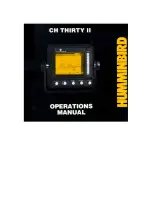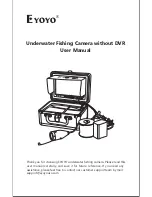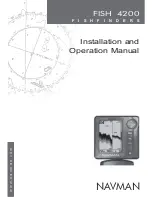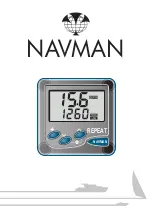
should be turned until the harder area is located. This area will return a gray signal as
opposed to the black for the softer bottom.
Note: In learning to operate your CH-THIRTY II, a recommended setting for the white line would
be 12 o’clock.
SURFACE NOISE
Most bodies of water, because of wind, wave action, or algae, will result in a degree of surface
noise or clutter which will be evident just below the zero mark on the chart paper. On those
bodies of water where there is virtually no wave action or algae, the amount of surface noise will
be minimal. A surface which is subjected to algae concentrations or a lot of wind and wave action,
such as white capping, will produce a lot of surface noise. Similar conditions are evident by the
turbulence created by an outboard engine. Crossing over the wake of an outboard will also cause
surface noise to be displayed. This condition can be altered by turning down the sensitivity
control, or by advancing to the next depth range. Some readings such as bait fish schools near
the surface might be effected by this condition, but it will not alter the appearance of the targets
beneath the surface clutter range. Surface feeding fish that are obscured by top surface clutter
will become evident by reducing the sensitivity, some loss of bottom echo will be experienced
however.
FRONT PANEL REMOVAL
The exclusive Humminbird amber viewing window is part of a delicate front panel which exposes
both the paper cartridge and the stylus belt. Either may be adjusted or changed through this front
paned by snapping open the two square closures located in the upper corners of the front panel
(Photo 1). This allows the panel to open forward. To remove the front panel from the unit,
simultaneously depress the two spring loaded pins at the bottom of the panel (Photo 2). It will
remove forward.
Summary of Contents for CH Thirty II
Page 1: ......


















